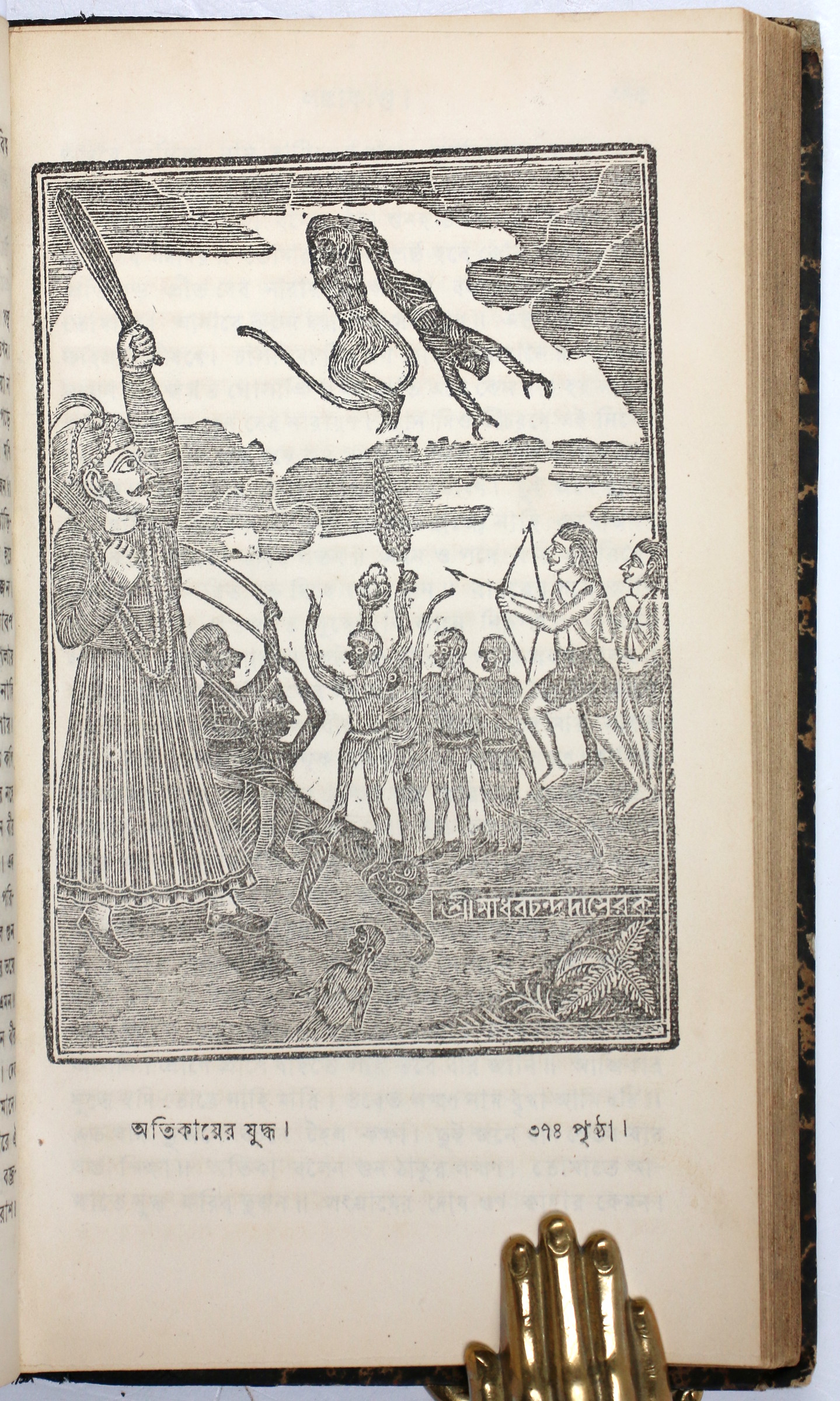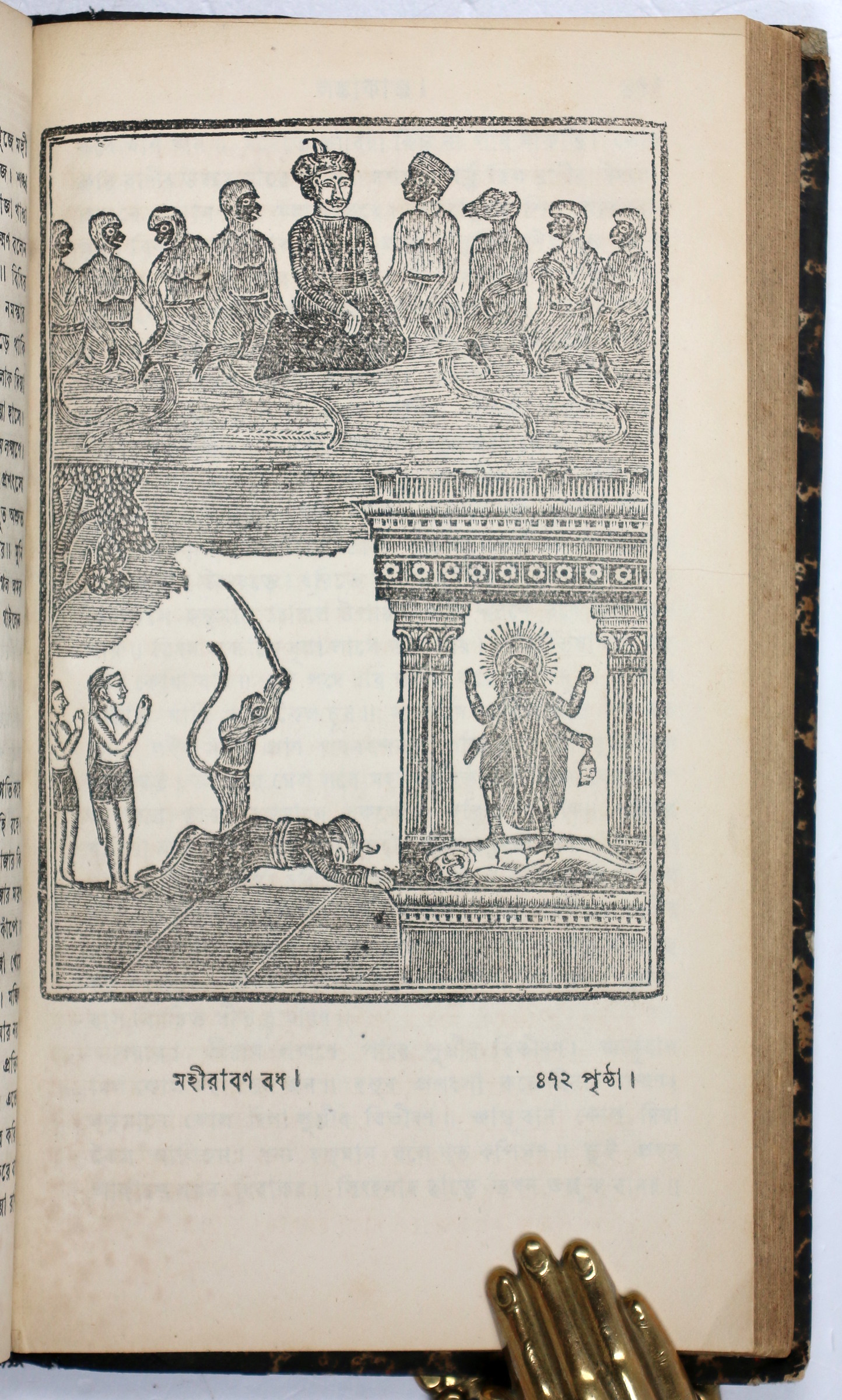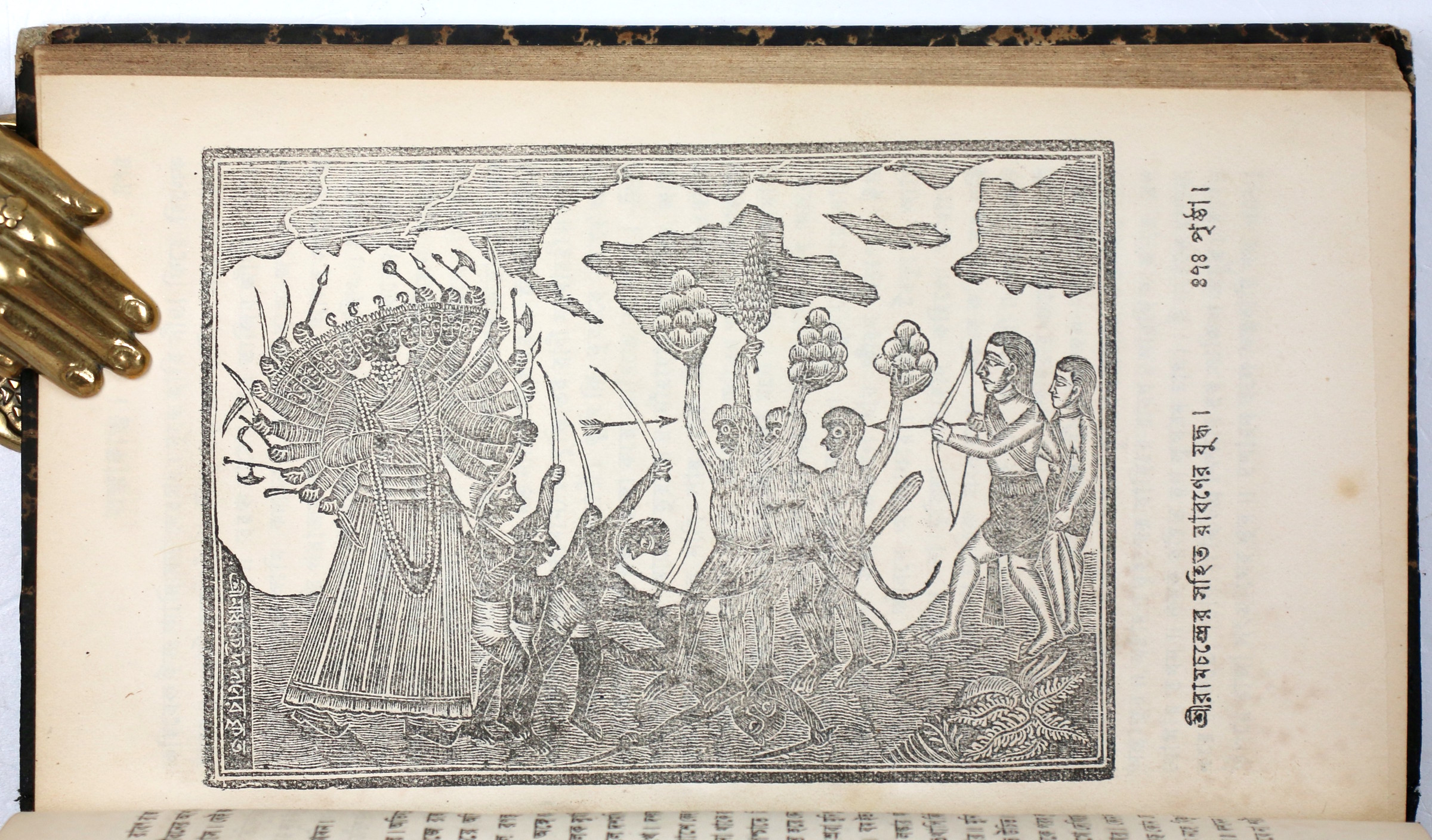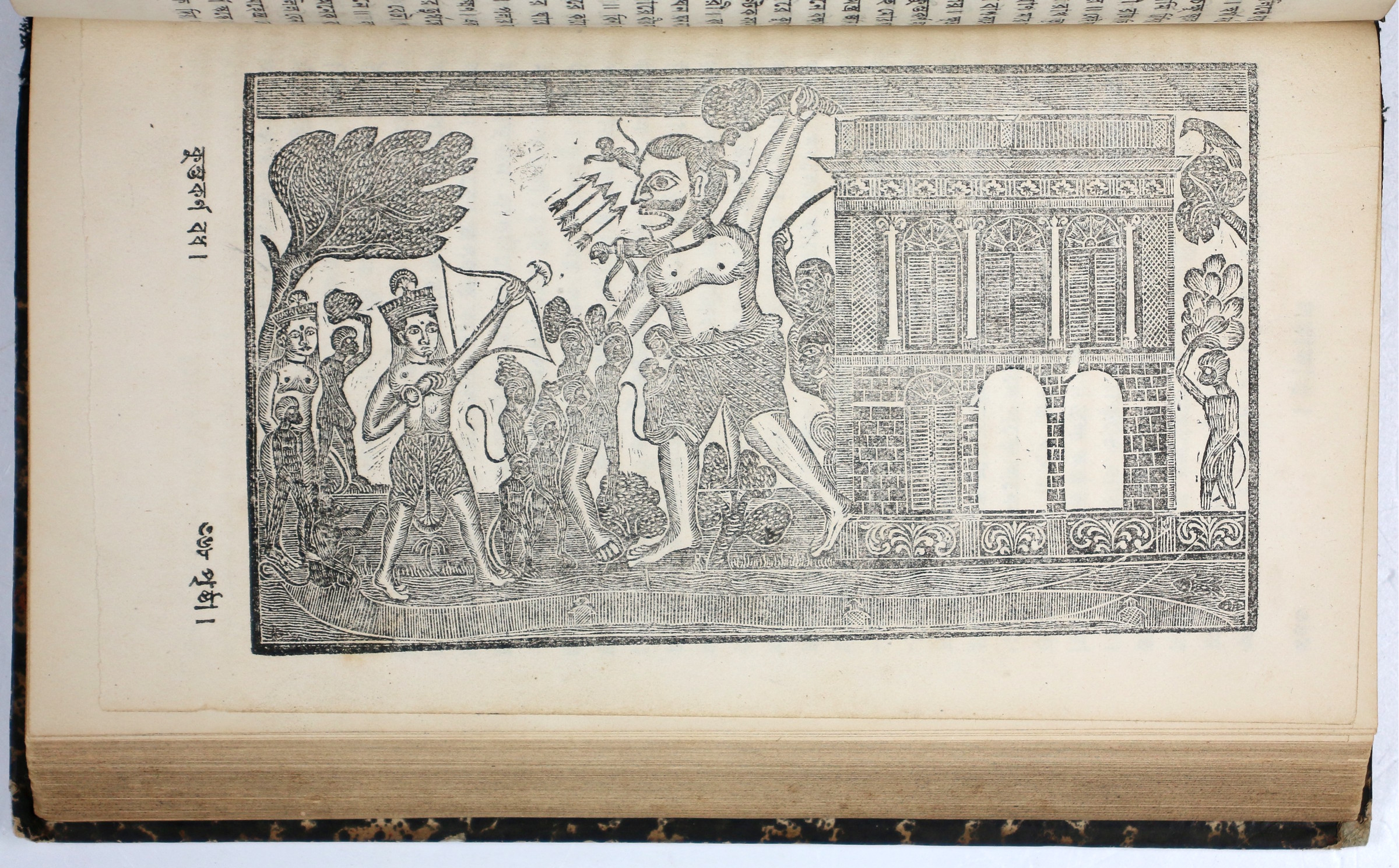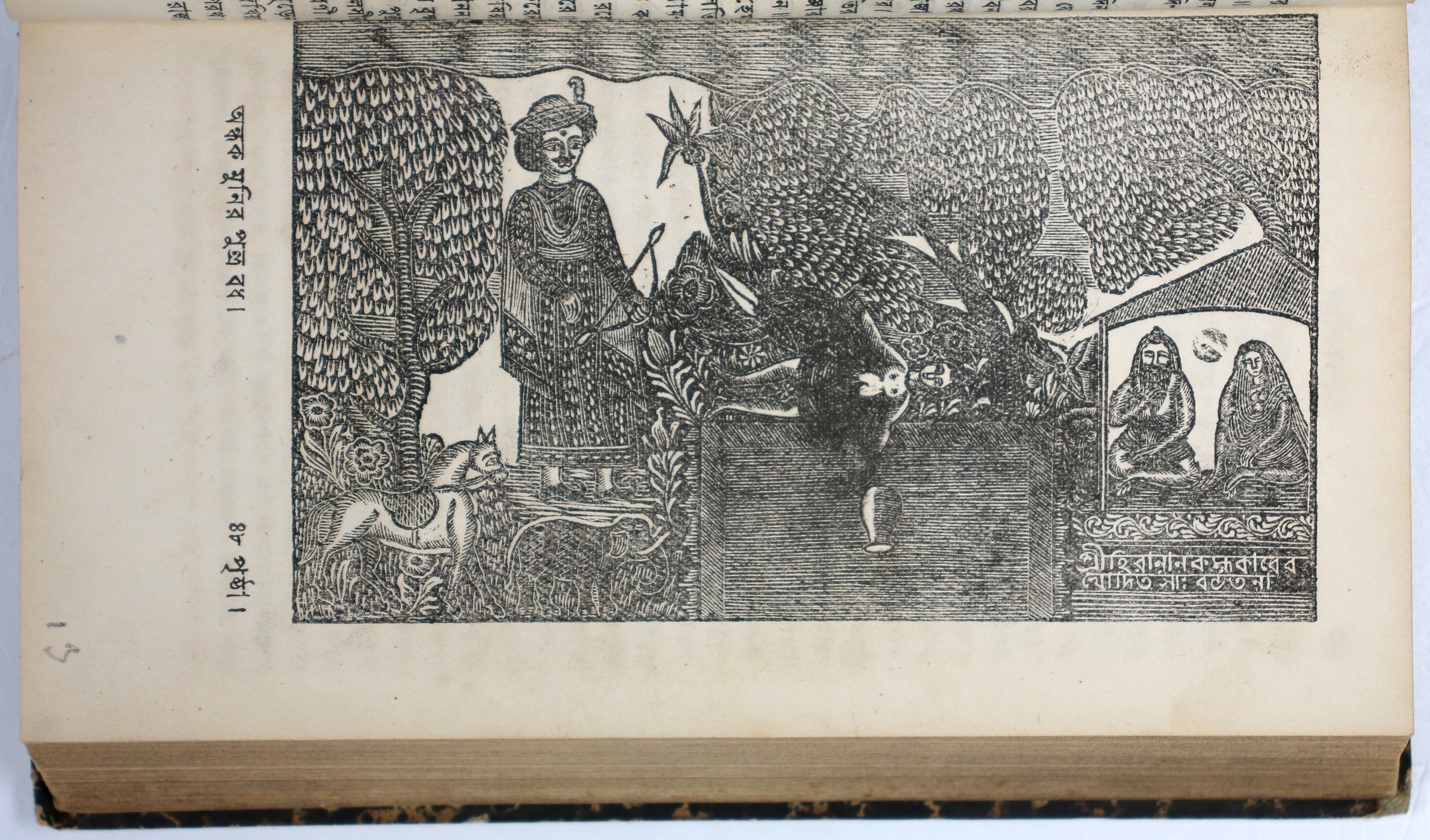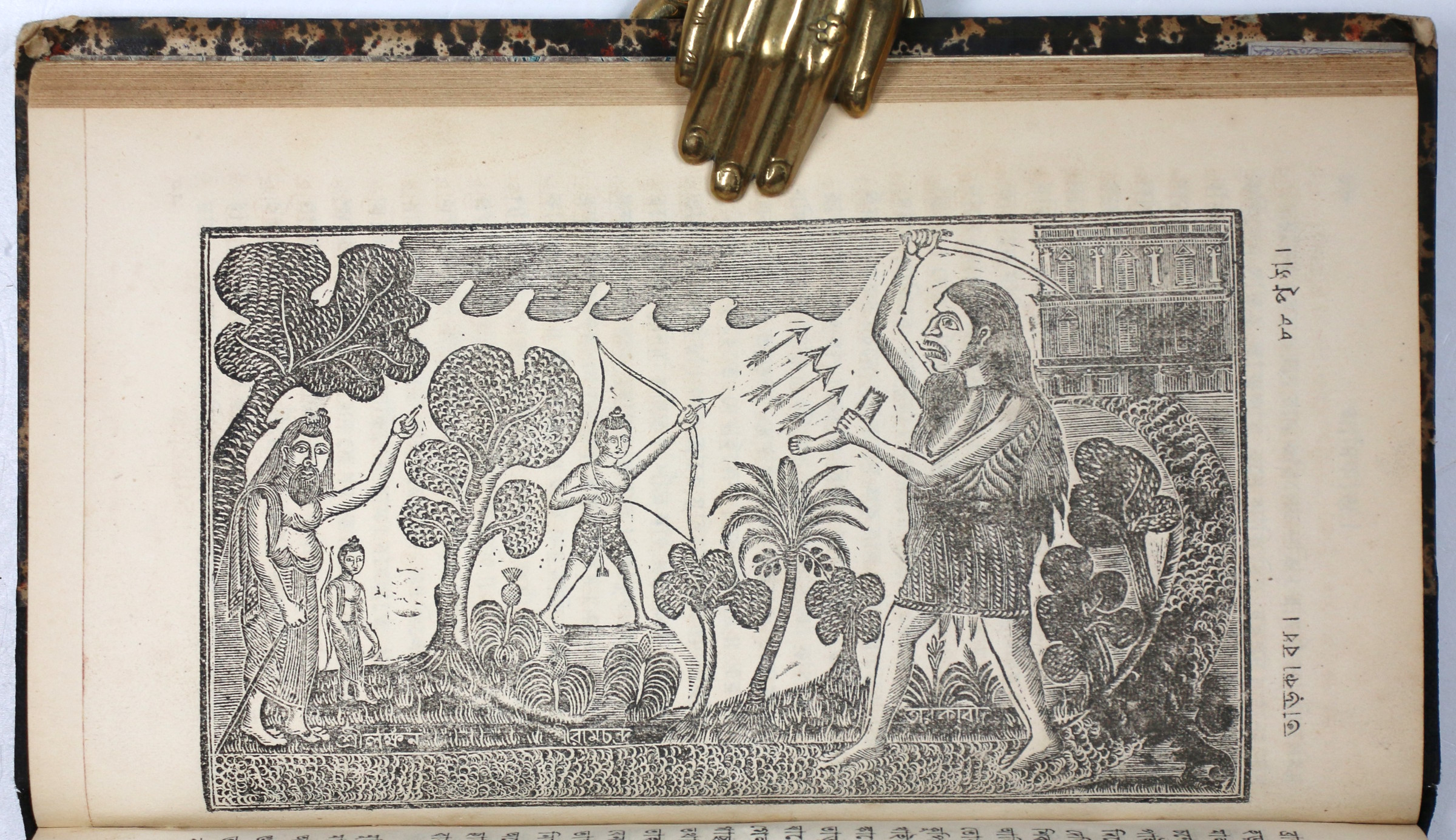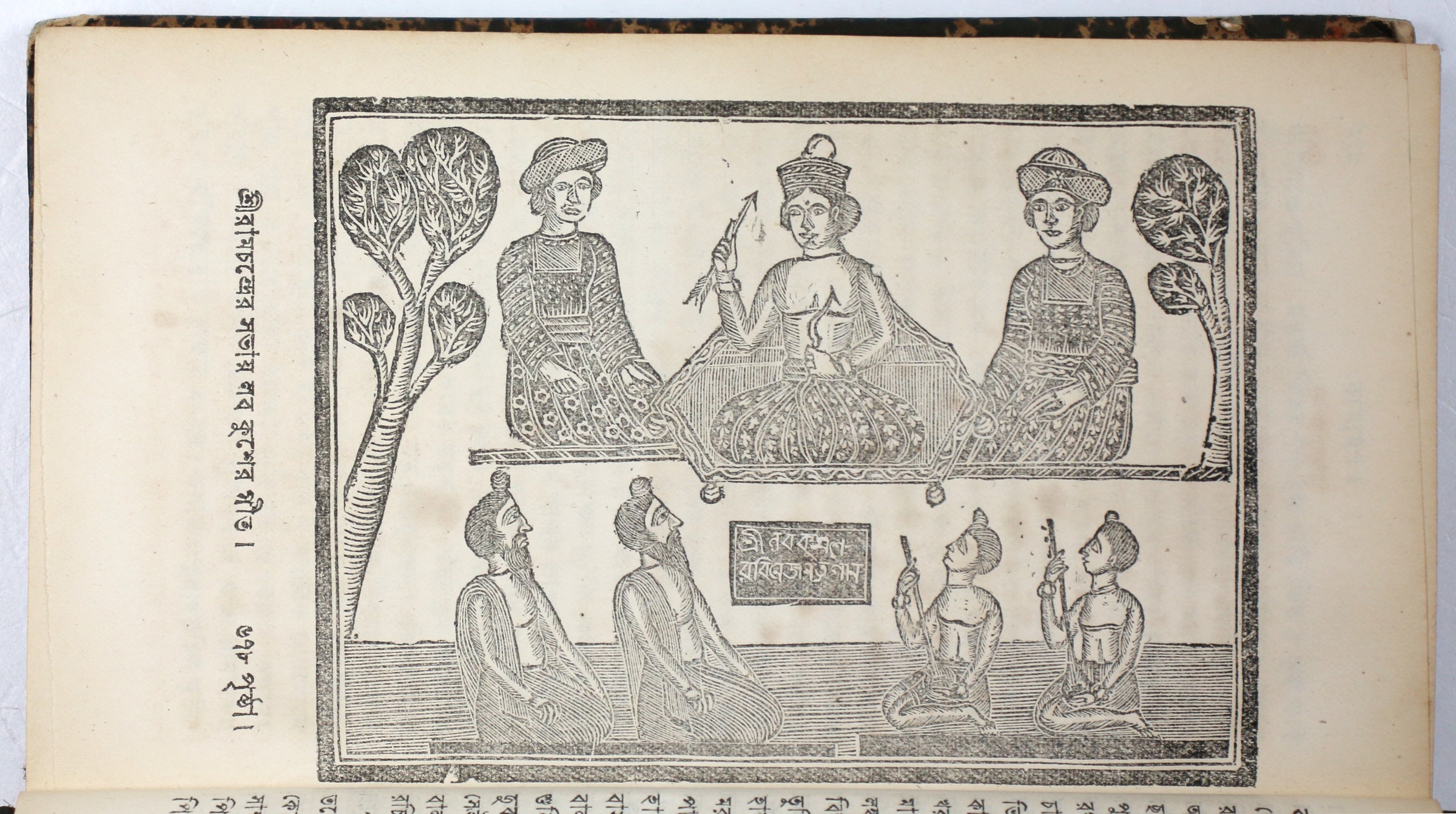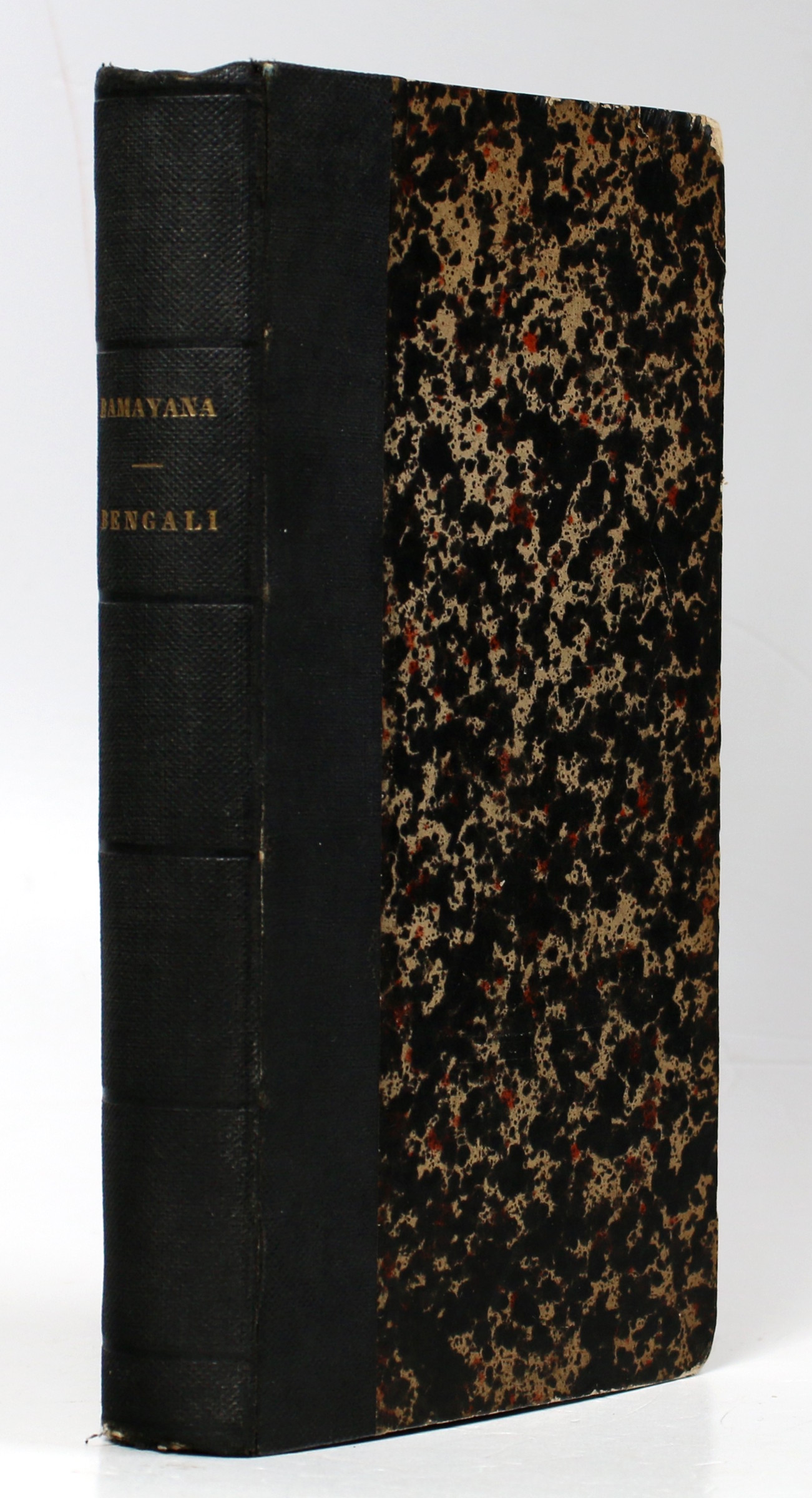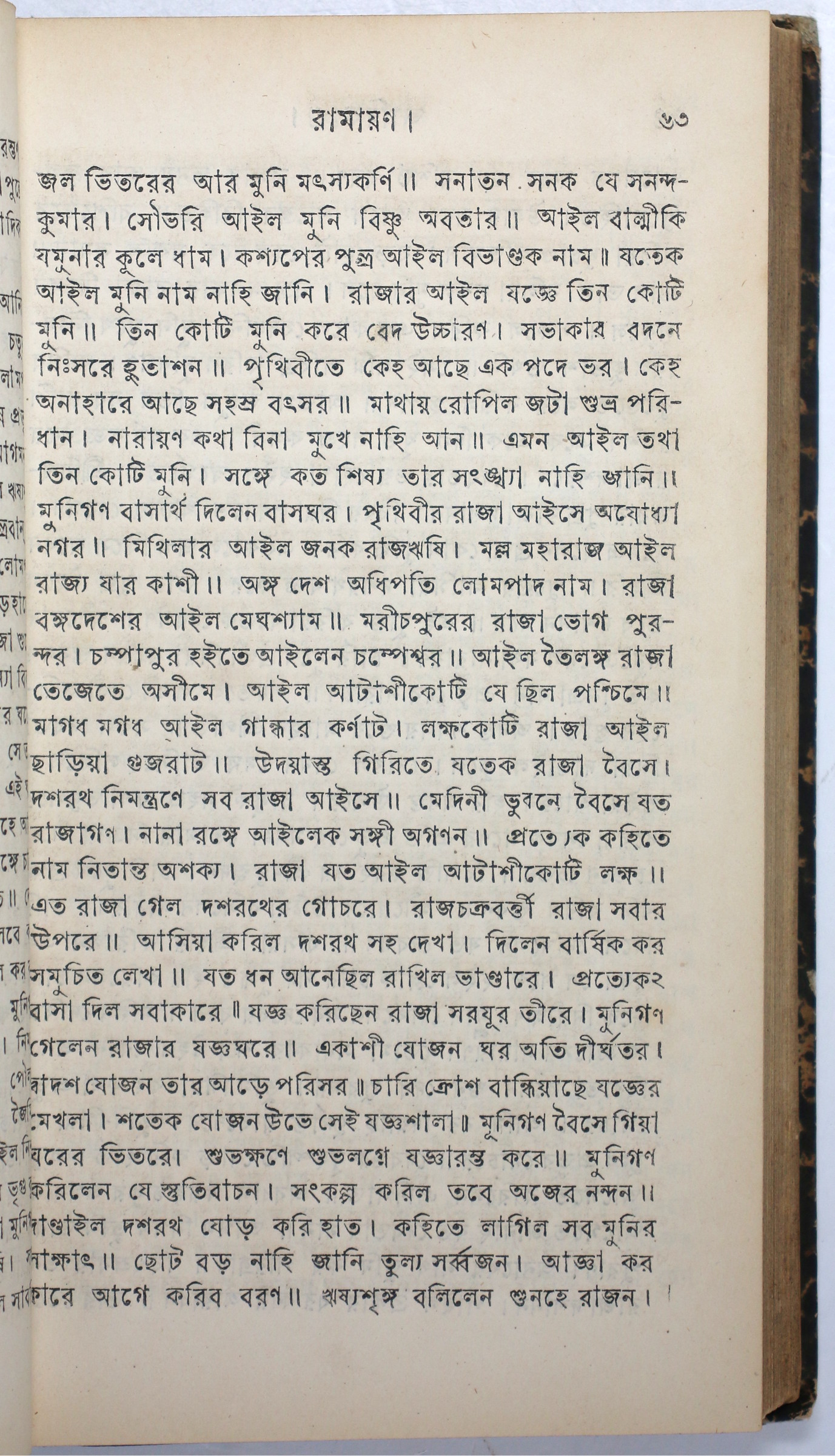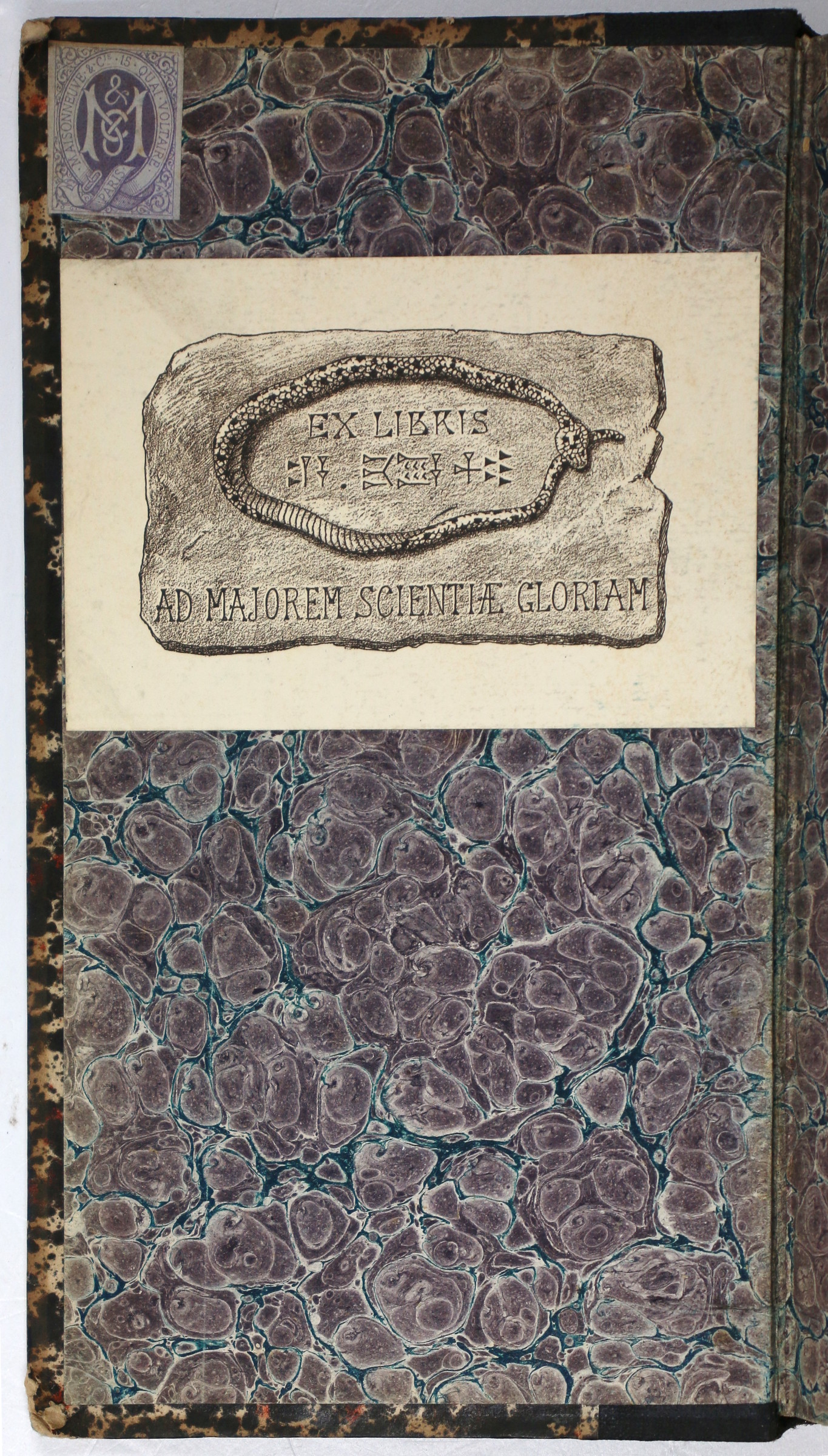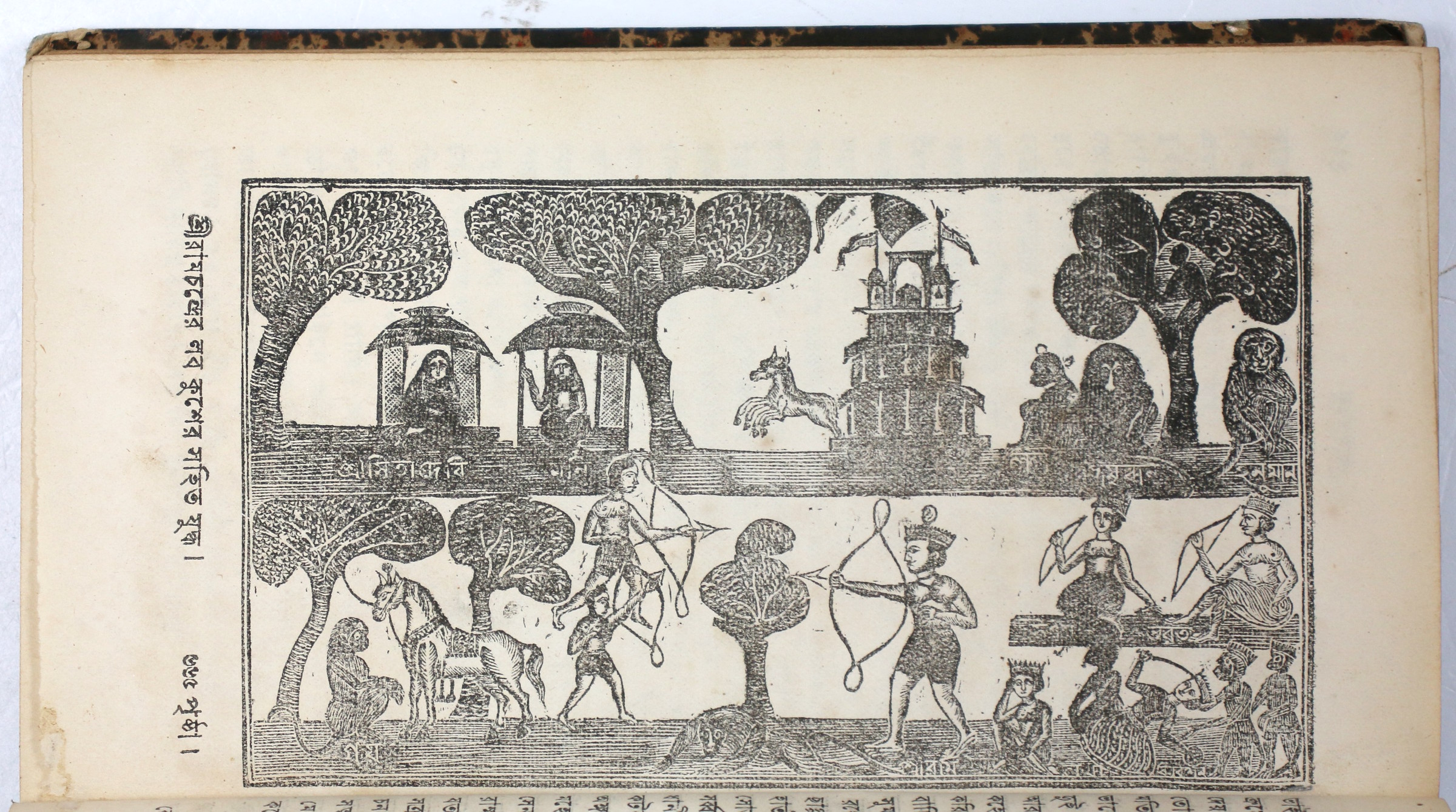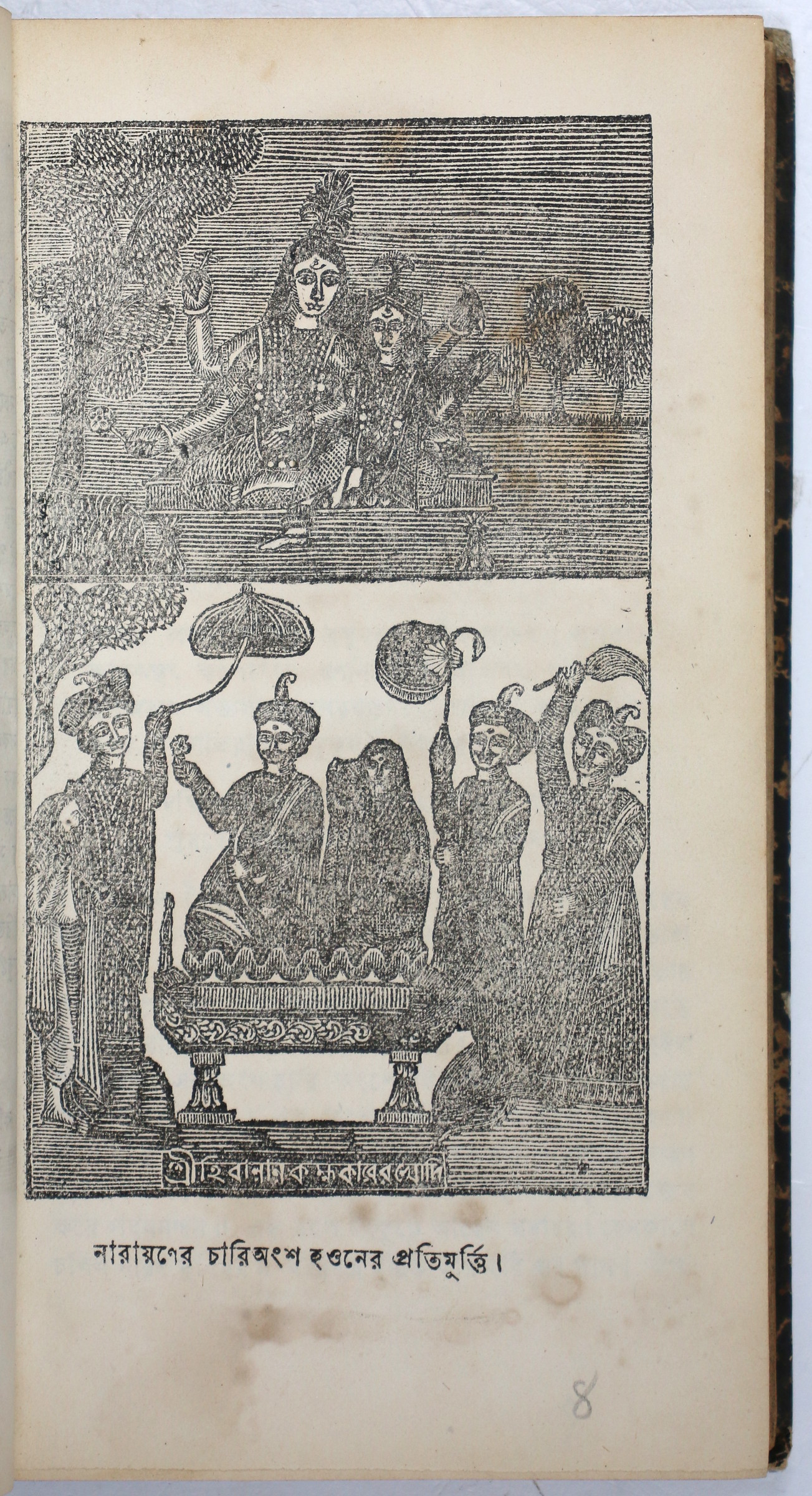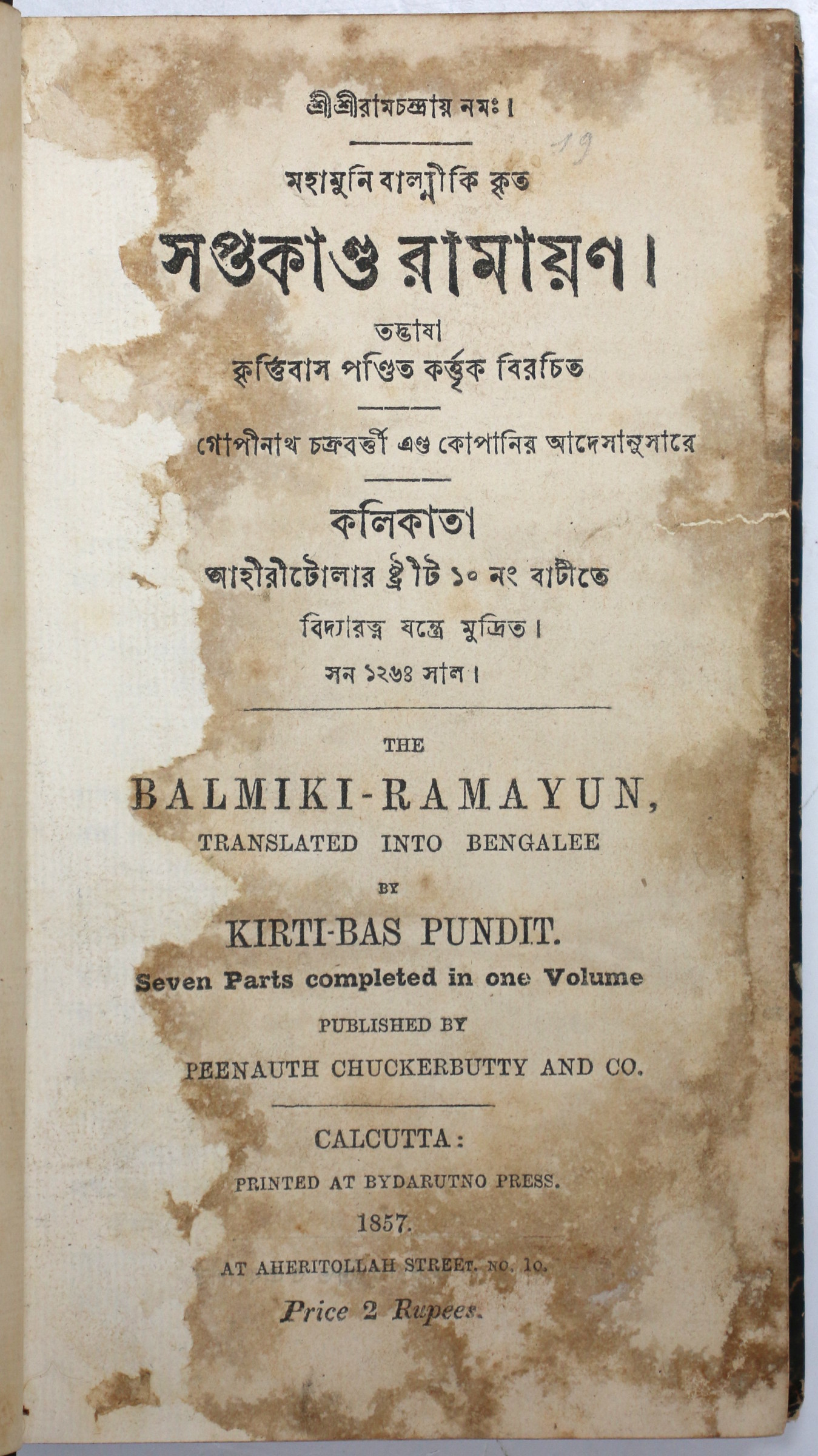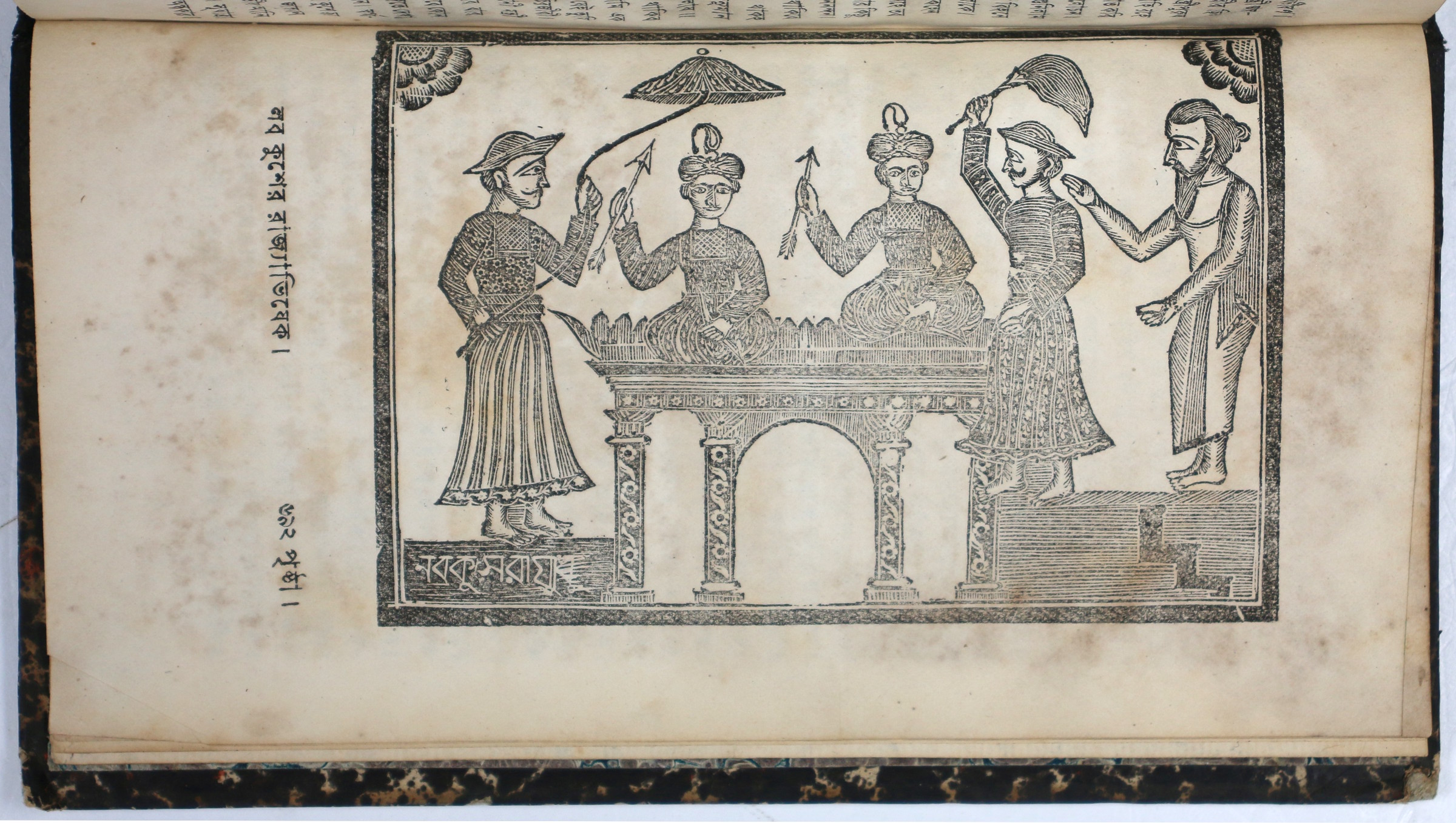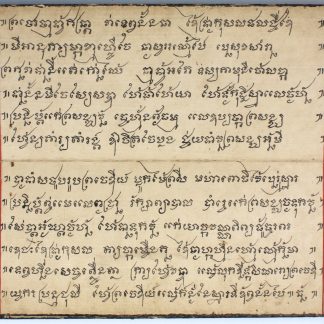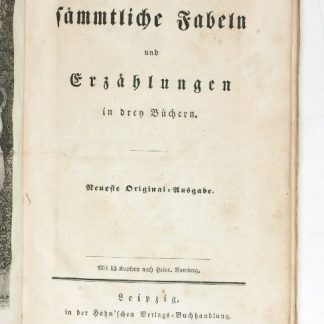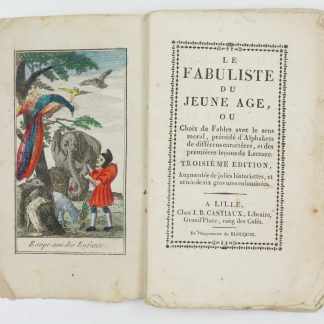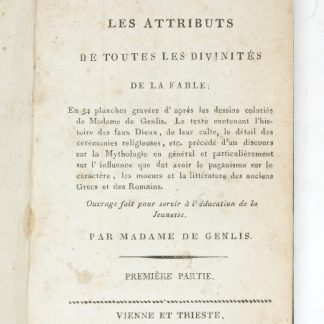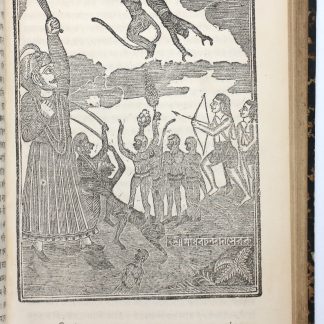The "Bible" of Bengal
The Balmiki-Ramayun, Translated into Bengalee by Kirti-Bas Pundit.
8vo. (16), 694 pp. With 11 woodcut plates. Contemporary cloth-backed marbled paper. Marbled endpapers.
€ 9.500,00
Exceedingly scarce edition of the first Bengali translation of the Ramayana, completed in the 15th century by Krittibas Ojha (1381-1461) and of utmost importance to the literary history of the Bengali language. Despite its fame and history, no institutions hold a copy issued prior to 1926, and only two editions (1926 and 1977) are held in institutions globally, with no copies listed in auction records.
First printed in 1810, the text is entirely in Bangla, save for a partly English title-page. It tells the story of the Ramayana in Krittibas's loose, creative, and distinctively Bengali translation. The Ramayana, originally written in Sanskrit, cannot have its importance overstated, but it in Bengal it was also a text only available to the extremely literate upper class, who could read Sanskrit. The mass popularity of Krittibas's Bengali Ramayana has long been noted: "The translation of the Ramayana by Krittivasa is by far the most popular book in Bengal [...] It is in fact the Bible of the people of the Gangetic Valley, and it is for the most part the peasants who read it" (Dinesh Chandra Sen, p. 170). In many ways it has come to represent an era, that of "the birth of the native Bengali culture and literature, liberated from the shackles of Sanskritic school so long in vogue, which in turn gave birth to a popular indigenous culture" (Sandipan Sen, p. 52). Indeed, it was so closely related to the concept of non-Sanskritic Bengali literature as a whole that it was banned by Raja Krishnachandra of Krishnanagar, a patron of Sanskritic scholars. Despite this pressure and other, later translations into Bengali, Krittibas's Ramayana remains considered, quite simply, the oldest and the best.
This copy is accompanied by 11 woodcut plates showing scenes from the story, including the deaths of Mahiravan and Kumbhakarna, Ravana's battle with Sri Ramachandra, and the coronations of both Lob Kush and Sri Ramachandra.
With the bookseller's plate of Maisonneuve & Cie, Paris, and the ex-libris bookplate in neo-Cuneiform and Latin.
First leaves browned and stained; title-page rebacked with some wear but no loss to text; a few instances of tape repairs.
Cf. Dinesh Chandra Sen, History of Bengali Language and Literature (Calcutta, 1911). Sandipan Sen, Sanskritisation of Bengali: Plight of the Margin and the Forgotten Role of Tagore. In: Journal of the Department of English Vidyasagar University 11 (2013-14), p. 51-58. Not in OCLC.

